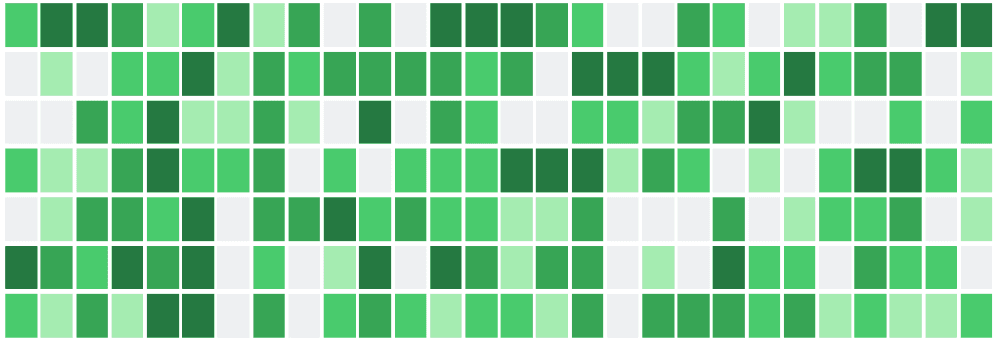Java vs Python: Essential Differences Of Two Fundamental Programming Languages
Two of the most widely used programming languages today are Java and Python. Both of these programming languages have a vast array of capabilities with exhaustive and ever-growing libraries of commands, but they are often used in tandem to achieve specific outcomes.
So, Java vs Python, which should you learn as a new developer?
Are Java and Python Similar?
There are many important programming languages that continue to grow and find new uses. Java and Python are also some of the most popular and diverse languages in the realm of programming, and they serve as the building blocks for many modern-day tech applications. Java was first introduced to the public by Sun Microsystems in 1995, and it quickly became a go-to for many different programming purposes.
Java is also based on OOP, but what makes it special is that it can be used on almost any platform. Sun Microsystems designed this language around the concept of “WORA,” which stands for “write once, run anywhere.” As such, Java is an extremely adaptable programming language that lives up to its reputation.
Python, on the other hand, has actually been around since the 1980s. And although it has been used consistently since its inception, it has gained strong popularity in recent years for its contributions to machine learning, artificial intelligence, and data analysis. However, Python has a wide range of uses beyond data sciences that we will explore later.
Java Vs Python

What are the Differences Between Java and Python?
When analyzing Java vs Python, it can be used in many of the same spaces for similar purposes, but each of these programming languages has its own strengths and drawbacks when it comes to different applications. Let’s take a look at some of the similarities and differences between Java and Python.
Java Vs Python: Syntax and Type Checks
Winner: Both
The choice of Java or Python depends on your project’s specific requirements, team expertise, and coding style preference.
When programmers write a piece of code, that code is meant to return a specific result based on the data that is introduced into the program. For example, a calculator runs a piece of code that is capable of adding integers (2 + 2 = 4).
The code that returns this result needs to know a few things in order to carry this out correctly and consistently (i.e., What kinds of values can be used in this function? What kinds of actions can be performed on this data? How can the data within these values interact with one another?)
Java – When Java is used to write this kind of program, the values, or “types,” need to be declared before the process can take place. This is known as static typing. Essentially, what this means is that, in a Java program for adding integers, you will need to explicitly declare what kinds of data will work in this program (integers), what kinds of data can interact in the program (integer with integer values), and what kinds of functions they can be involved in (addition).
The reason why they need to be declared is because of Java’s static typing feature. When a piece of code is statically typed, this means that the value types will be checked at compile time. When you execute a statically-typed function, the data will be aggregated before the code runs its function, and the types will be checked to ensure that the values are compatible with the program.
While this feature tends to return more accurate results, it does make for a more lengthy piece of code since everything has to be typed out explicitly.
Python – On the other hand, Python is dynamically typed. What this means is that the types are checked at run time rather than compile time, allowing the program to return results with less code. When a program is dynamically typed, the values do not need to be explicitly declared, allowing the program to check types at run time.
So if we go back to our addition example, a Python program will run its code and attempt to carry out the function based on the information that it is given. A Python program can accomplish this by inferring rather than declaring.
For example, when a Python program attempts to add two values together, it will infer that the two values should be integers.
If you were to try to add 2 + Frank in a Python program, the program wouldn’t catch the fact that the two types of data are incompatible until it attempts to execute the function.
While this feature allows programmers to create more dynamic programs with less verbose code, it can present some challenges when it comes to returning accurate results.
Java Vs Python: Performance
Winner: Python
Python can preform multiple tasks at once, especially when combined with optimized libraries and careful coding practices.
When we talk about performance as it relates to programming languages, we are typically referring to a few different characteristics such as speed, accuracy, and diversity. While both Java and Python are extremely diverse, there are some considerations to take into account when it comes to their speed and accuracy.
Java – Since Java is statically typed, meaning that all of its functions and values are explicitly stated in the program, it is typically faster than Python. When you execute a piece of Java code, it already has all the information that it needs to determine whether or not it can accurately return information based on the data that has been introduced into the program. This allows it to execute the function much more quickly, or it can also determine that the data is not compatible with the function.
Python – As we mentioned previously, Python is dynamically typed, which means that it has to infer certain characteristics about the data that has been introduced based on what it knows about the intended purpose of its function. The example we gave before of 2 + 2 = 4 is extremely simple, and a well-written Python program could easily type-check this data and return a fast result.
However, Python is generally used for performing extremely complex tasks, such as those within machine learning algorithms. Because it is dynamically typed, Python is the perfect programming language for these kinds of algorithms.
Java Vs Python: Development Speed
Winner: Python
Python is a preferred choice when it comes to rapid prototyping, scripting, and smaller projects.
Naturally, Java and Python have two very different development processes, which ultimately affects their time to completion.
Java – Because of Java’s statically typed syntax, developers will often need to dedicate a significantly longer period of time to create Java-based programs. This is largely due to the fact that values within Java code need to be explicitly declared, resulting in much more manual labor during the production process.
Python – Python tends to be much leaner in its syntax, resulting in a much shorter production time. Additionally, Python is much more legible for users, which makes the writing process more straightforward.
However, Python can present some additional challenges when it comes to testing its functionality. In order to ensure that Python’s code is operational and reliable, programmers may need to carry out additional testing and fix issues when they arise.
Java Vs Python: Usage
Winner: Both
Java and Python both have strengths and are suitable for a variety of uses.
Although Java and Python have specific use cases where one is often more suitable than the other, they do have some overlap in terms of their capabilities.
Java – Java can be used across a wide array of platforms for many different purposes. Because Java is statically typed, it can provide many dynamic and interactive functions, which is why it is often a go-to for front-end web development and Android app development.
Additionally, Java is often used for large, enterprise-level applications such as customer relationship management (CRM) and financial software. This is due to Java’s ability to reliably process and retrieve large amounts of data through server-side Java components.
However, Java’s capabilities go far beyond these examples. Java can also be used for game development, scientific and cloud computing, data analysis, and desktop applications, just to name a few.
Python – Python can be used for several of the same applications that Java is used for, such as scientific and cloud computing, web development, and desktop applications, but what sets it apart is its ability to infer data. Its inference capabilities make it one of the leading choices for automation, machine learning, and artificial intelligence.
Another feature of Python that enhances its ability in the realm of machine learning and artificial intelligence is its massive ecosystem of libraries and frameworks. Libraries such as TensorFlow and Sci-Kit Learn enable developers to easily build and train machine learning models.
Python is also commonly used for accounting, natural language processing, audio and video processing, cybersecurity, and data analysis.
Java Vs Python: Libraries
Winner: Java
Python has a rich library ecosystem but Java’s libraries are well-suited for building robust, scalable, and high-performance applications.
This is one area where Java and Python are nearly tied since they both have enormous collections of libraries and frameworks. When we talk about programming language libraries, we are referring to bodies of code that are based on specific programming languages but have been developed for specific use cases.
On the other hand, frameworks are pre-built components that can be customized and combined to carry out certain functions. Essentially, frameworks are meant to provide Developers with all of the necessary structure and functions to create a complete application.
Java – Java provides an extensive standard library for many different tasks, such as networking and data structures. However, there are many additional libraries that make Java more diverse and dynamic. One great example of this is Guava, which is a large set of Java libraries developed by Google. Guava is often used for collecting and caching data, among many other important processes.
Python – Python’s massive standard library is widely used for networking and data structures, but there are many additional libraries within the Python ecosystem. For example, NumPy is a crucial component of data science applications, and it can be used for performing complex numerical operations.
Python also has its own standard query language, which is known as SQL Alchemy. This SQL toolkit is used to facilitate communication between Python programs and structured databases.
Python’s frameworks and libraries also include Pandas, Matplotlib, TensorFlow, Py Torch, NumPy, and NLTK (Natural Language Toolkit).
Conclusion
Understanding the difference between Java and Python starts with a well-rounded education on programming and development. If you are interested in learning more about these essential programming languages, then LearningFuze might be right for you.
Here at LearningFuze, we are preparing the next generation of developers, designers, and data scientists for successful and lucrative tech careers. Our in-depth bootcamps are designed around the most in-demand, real-world skills that employers are looking for right now. By attending one of our Java or Python bootcamps, you will not only learn the difference between Java and Python, but you will also be equipped with the fundamental knowledge and skills you need to land an exciting job and start your career.
We also offer comprehensive career services to all of our graduates, and over 90% of the students who take full advantage of these services find a job in the field of their choice in less than six months.
Additional Resources
You might like these

February 28, 2025
The healthcare industry's transformation happens quickly through modern software solutions that enhance the quality of medical services along with operational efficiency and better clinical choices. The transformation of the Healthcare industry depends on four emerging technologies: Artificial Intelligence (AI), telemedicine, the Internet of Things (IoT), and cybersecurity system sophistication.

February 19, 2025
We sourced expert insights and data from industry leaders, tech companies, and research firms to highlight key software development trends shaping the industry.

April 10, 2024
Discover the day-to-day of a full-stack engineer, essential skills, and career path. Join LearningFuze's coding bootcamp with job placement and lifetime access.





